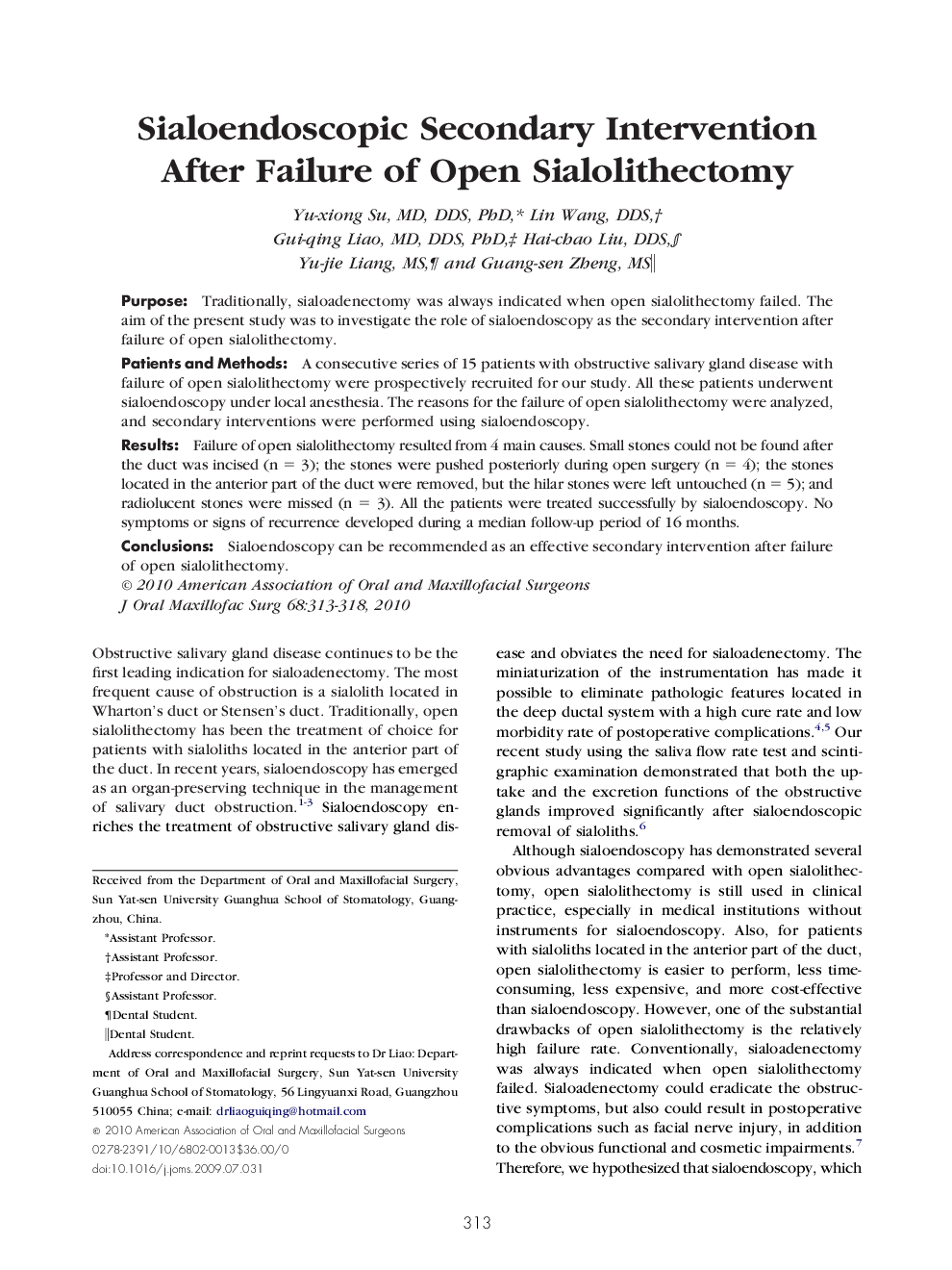| Article ID | Journal | Published Year | Pages | File Type |
|---|---|---|---|---|
| 3157182 | Journal of Oral and Maxillofacial Surgery | 2010 | 6 Pages |
PurposeTraditionally, sialoadenectomy was always indicated when open sialolithectomy failed. The aim of the present study was to investigate the role of sialoendoscopy as the secondary intervention after failure of open sialolithectomy.Patients and MethodsA consecutive series of 15 patients with obstructive salivary gland disease with failure of open sialolithectomy were prospectively recruited for our study. All these patients underwent sialoendoscopy under local anesthesia. The reasons for the failure of open sialolithectomy were analyzed, and secondary interventions were performed using sialoendoscopy.ResultsFailure of open sialolithectomy resulted from 4 main causes. Small stones could not be found after the duct was incised (n = 3); the stones were pushed posteriorly during open surgery (n = 4); the stones located in the anterior part of the duct were removed, but the hilar stones were left untouched (n = 5); and radiolucent stones were missed (n = 3). All the patients were treated successfully by sialoendoscopy. No symptoms or signs of recurrence developed during a median follow-up period of 16 months.ConclusionsSialoendoscopy can be recommended as an effective secondary intervention after failure of open sialolithectomy.
